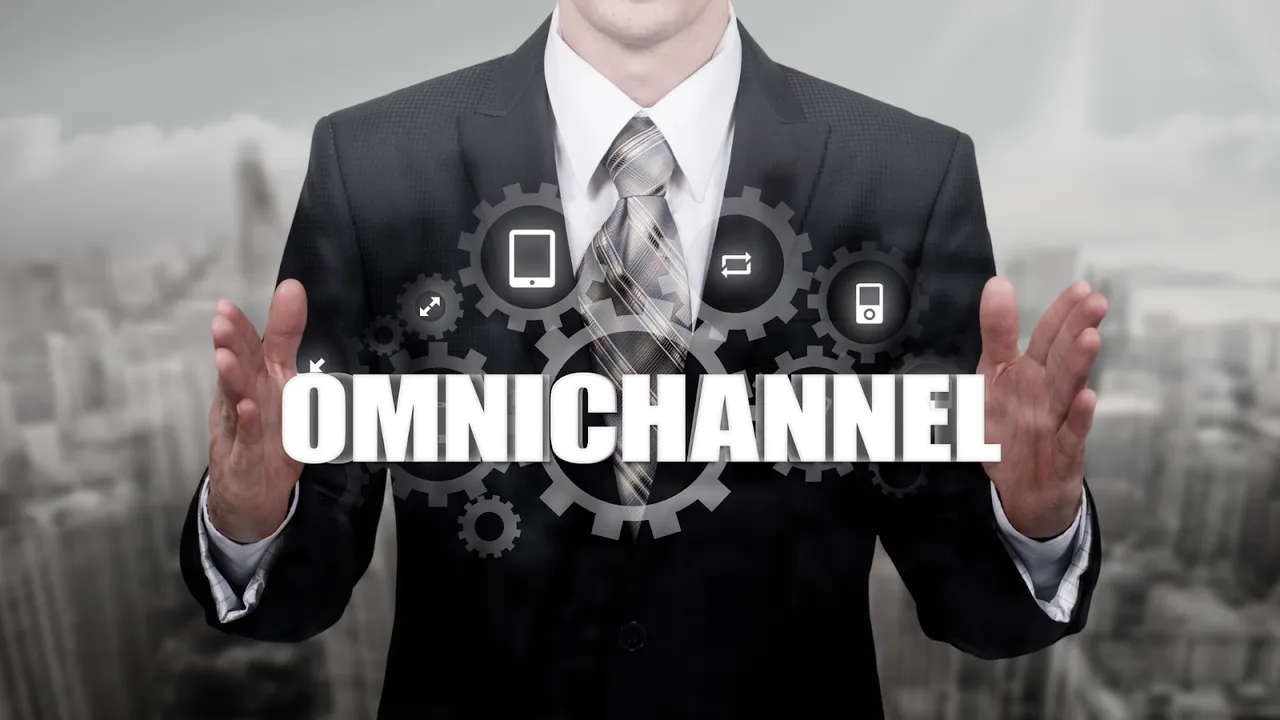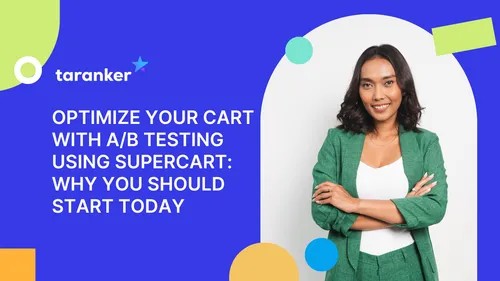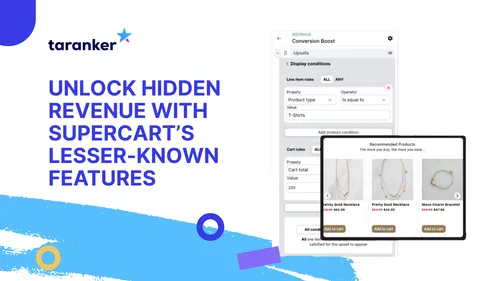As digital commerce matures, customer journeys have become increasingly non-linear, fragmented, and channel-fluid. Today’s consumers don’t just browse a website or walk into a store - they interact across devices, platforms, and moments. They discover on mobile, research via desktop, convert in-app, and re-engage through social media or email. In fact, over 73% of consumers engage with multiple touchpoints before making a purchase.
This omnipresent behavior presents both a challenge and an opportunity. Brands that continue to operate in isolated channels risk losing high-intent moments scattered throughout the buyer journey. In contrast, those that architect intelligent, omnichannel upsell strategies can transform scattered interactions into orchestrated commerce - capturing customer intent not just once, but repeatedly and contextually.
In this blog, we’ll explore how brands can design, implement, and scale omnichannel upsell programs that work across every customer touchpoint - redefining upselling from a conversion tactic into a strategic engine for lifetime value.

The Strategic Shift from Multichannel to Omnichannel Selling
At first glance, multichannel and omnichannel commerce may appear synonymous. Both involve engaging customers across a range of platforms - websites, mobile apps, social media, physical retail, and more. But the strategic difference lies not in how many channels a brand utilizes, but in how these channels interact, and more importantly, how they integrate around the customer experience.
Multichannel commerce typically treats each channel as a distinct entity. A customer might receive an email promotion, see a retargeted ad on Instagram, or browse a product in-store - yet these interactions often exist in isolation. The systems powering these channels do not communicate with one another, resulting in fragmented experiences, inconsistent messaging, and lost contextual intelligence.
By contrast, omnichannel commerce represents an evolution - a more mature, customer-centric model where all channels are interconnected through a unified data infrastructure, shared intelligence, and cohesive experience design. In this model, a customer's activity on one channel enhances the relevance and accuracy of engagements on every other. For example:
-
A shopper who browses shoes on desktop sees curated accessory suggestions in-app.
-
A product added to the cart on mobile is remembered and retargeted via email.
-
An in-store associate, using CRM data, recommends an item previously favorited online.
Each interaction builds upon the last, creating a continuous, personalized journey instead of disjointed touchpoints.

This strategic integration drives measurable results. According to industry research, companies that implement fully realized omnichannel strategies report:
-
30% higher customer lifetime value (CLV), due to improved retention and relevance
-
18–33% higher per-transaction spend, as shoppers encounter smarter, better-timed upsell opportunities
-
Lower cart abandonment and greater fulfillment efficiency, enabled by unified inventory and intent data across systems
Moreover, omnichannel brands build trust and brand equity faster, as their interactions feel seamless and personalized rather than opportunistic or redundant.
2025 Trends Reshaping Omnichannel Upsell Execution
As commerce becomes more distributed, upselling must evolve in tandem - moving beyond static placements and siloed triggers to become fluid, data-responsive, and channel-native. In 2025, the most effective brands are those that embed upsell logic directly into the customer journey - not as an interruption, but as an intelligent enhancement.
Here are five key trends that are reshaping how forward-thinking brands execute omnichannel upsell strategies:
1. AI-Powered Personalization at Scale
Personalization is no longer a luxury - it is the expectation. And in 2025, that personalization is driven by real-time data, not historical assumptions.
Advanced recommendation engines now ingest behavioral signals - clickstreams, cart patterns, dwell time, scroll velocity - and combine them with customer profile data (purchase history, segment type, location) to anticipate moment-specific buying intent.
Upsell suggestions are no longer “also viewed” placeholders. Instead, they are context-aware, micro-targeted recommendations optimized not only by product fit, but by timing, format, and medium. Whether it’s a cart popup or a follow-up email, every suggestion is dynamically personalized to maximize conversion potential - at scale and in milliseconds.
2. Seamless Online - Offline Integration
Physical retail is not obsolete - it’s being redefined. And brands that can bridge digital and physical channels gain powerful upsell levers grounded in omnichannel intelligence.
Examples include:
-
A customer using BOPIS (Buy Online, Pick Up In-Store) receives a mobile push notification upon arrival: “Customers who picked up this item also purchased…” - driven by app behavior and purchase patterns.
-
Shoppers browsing in-store while connected to Wi-Fi trigger dynamic accessory suggestions on their mobile devices, based on prior online interest or recent cart additions.
These moments are not random - they’re orchestrated. The result: higher in-store engagement, greater AOV, and elevated customer satisfaction - without requiring additional sales associate intervention.
3. Unified Customer Data Infrastructure
At the heart of every successful omnichannel strategy is a centralized customer data platform (CDP). This infrastructure unifies fragmented touchpoints - CRM, eCommerce, POS, loyalty, customer service - into a single source of actionable truth.
This enables brands to construct high-resolution customer journeys, where each data point refines the next interaction. For example: “Customer viewed product X on mobile, purchased product Y online, chatted about product Z via support. Suggest bundle B in a post-purchase email within 12 hours.”
With this infrastructure in place, upsell logic moves from reactive to predictive, transforming marketing automation into intent-driven orchestration.
4. Intelligent Touchpoint Expansion
Upsell opportunities are no longer confined to product detail pages. In 2025, every channel and every moment becomes a potential conversion catalyst - provided the offer is timely and contextual.
Modern brands now embed upsell prompts across:
-
Shopping carts: Smart cross-sell based on complementary SKUs
-
Add-to-cart confirmations: Dynamic bundles or upgrades
-
Post-purchase screens: Immediate follow-on offers to increase AOV
-
Transactional emails: Embedded recommendations that align with purchased items
-
Customer support chats: Triggered product suggestions based on inquiry content
-
Push notifications: Timely reminders or offer nudges based on prior engagement
Each of these touchpoints functions as a micro-stage for conversion - turning everyday interactions into high-impact, low-friction revenue moments.
5. Premium Experience Design with Brand-Forward Logic
For luxury and high-end brands, upselling must be carefully calibrated to maintain brand exclusivity, design integrity, and perceived value. In 2025, this means abandoning generic recommendation modules in favor of editorially curated, brand-consistent suggestions.
Examples include:
-
“Complete the look” recommendations that mirror stylist-curated pairings
-
Post-purchase concierge flows that introduce premium accessories with limited-time exclusivity
-
Member-only upgrades revealed dynamically through loyalty tiers or behavioral milestones
These experiences are not about transactional lift - they’re about emotional resonance and brand elevation. The upsell becomes a subtle extension of luxury, not a disruption to it.

The Omnichannel Upsell Framework: From Strategy to Execution
To execute omnichannel upsell strategies with precision, brands must move beyond tactical recommendations and establish a scalable operational model that aligns with both business intelligence and customer context. Below is a five-part framework designed to help eCommerce and retail teams systematize upsell execution across all channels - turning insights into action, and action into revenue.
1. Centralize Data to Enable Real-Time Intelligence
At the foundation of omnichannel success is a unified data infrastructure - one that consolidates all relevant customer, product, and transactional signals into a single decision engine. This includes:
-
Web and mobile browsing behavior
-
In-app engagement metrics
-
CRM records and purchase history
-
POS and in-store interaction data
-
Email/SMS click-through and conversion activity
With this centralized data layer, brands can move from siloed channel strategies to real-time, cross-channel intelligence - enabling upsell logic that adapts dynamically to where, when, and how a customer engages. In this environment, every touchpoint becomes informed, coordinated, and contextually aware.
2. Trigger Contextual Offers at High-Conversion Moments
Timing is everything. Effective omnichannel upselling requires precise orchestration of when and how recommendations appear. Rather than relying on generic "you may also like" placements, high-performing brands focus on moment-level personalization.
Key micro-moments include:
-
Cart review sessions: Trigger high-value complementary product suggestions before checkout.
-
Product detail exploration: Offer relevant upgrades or bundles as users scroll or hover.
-
Post-purchase confirmation screens: Introduce limited-time offers tied to recent purchases.
-
In-store pickup or scan events: Deploy mobile-based prompts based on prior interest or cart history.
Each moment is treated as a conversion catalyst - enhanced by user-specific triggers, AI scoring models, and contextual intent.
3. Maintain Design, Voice, and UX Continuity Across Channels
Omnichannel upsell execution isn’t only about intelligence - it’s about experience design. For upsell recommendations to be trusted, they must feel native to each environment and consistent with your brand’s identity.
This means:
-
Aligning visual design with channel-specific UI/UX standards (e.g., app modules vs. in-store displays)
-
Matching tone of voice and messaging cadence to platform behavior (e.g., promotional in email, conversational in chat)
-
Ensuring placement doesn’t interrupt the shopping experience but enhances it organically
When the look, feel, and tone are cohesive, upsell recommendations are perceived not as sales prompts, but as value-adding suggestions.
4. Leverage Multi-Armed Bandit (MAB) Testing for Continuous Optimization
Traditional A/B testing is rigid, slow, and inefficient in dynamic commerce environments. Multi-Armed Bandit (MAB) models offer a smarter, adaptive alternative - allocating more exposure to high-performing variants in real time.
With MAB testing, you can dynamically optimize:
-
Product combinations and upsell logic
-
Message headlines, CTAs, and incentives
-
Recommendation placement across devices and pages
-
Timing and frequency of offers per user type
This approach reduces wasted traffic, accelerates learning, and ensures your upsell engine gets smarter with every impression.
5. Track the Right Metrics to Prove Business Impact
To cement upselling as a strategic revenue lever, brands must measure outcomes that align with business goals - not just engagement metrics.
Key performance indicators should include:
-
Average Order Value (AOV) uplift per channel
-
Offer acceptance and conversion rates
-
Revenue generated from post-purchase or triggered flows
-
Incremental LTV attributed to upsell campaigns
-
Campaign ROI compared to baseline performance
By linking upsell performance to these broader KPIs, brands can justify investment, secure buy-in across departments, and integrate upsell optimization into their core growth strategy.

Afterthought
In the new era of digital commerce, presence without precision is noise. Simply existing across multiple channels is not enough - today’s customers expect their experiences to be cohesive, intelligent, and intuitive.
Upselling, when done with intent, becomes more than just an additional revenue tool - it becomes a vehicle for contextual service, a method of reducing friction, and a subtle expression of brand value. It’s not about asking for more - it’s about offering more, in the right way, at the right time.
Ultimately, omnichannel upsell strategies are not about selling more aggressively. They’re about serving more intelligently - ensuring every touchpoint delivers value, relevance, and trust.












